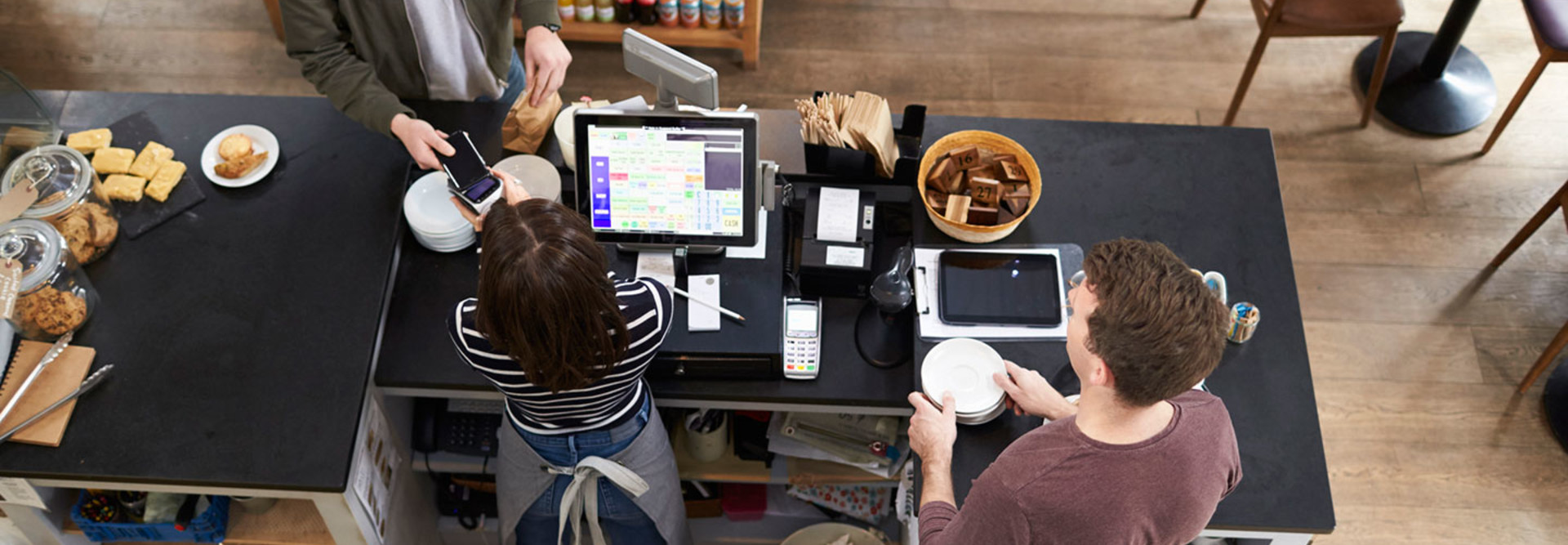The 7 Technologies Retailers Need to Empower Sales Associates
Recent research has indicated that retailers need to balance investments in new technology with a continued emphasis on the human touch. Customers want to use new technologies like mobile push notifications (which retailers can enhance and personalize via beacons) but also want to be greeted by human sales representatives, according to a report released earlier this year by Interactions, the retail solutions and experiential marketing unit of retail branding and sourcing firm Daymon.
Sales associates remain a retailer’s greatest asset and the key to satisfied customers. By empowering associates with the technology they need to optimize every customer interaction, retailers can boost customer loyalty and the bottom line.
Here are seven key technologies that retail associates need to be successful:
1. Mobility and Apps Give Associates Flexibility
Untethered from the register, networked mobile devices offer associates flexibility in their work. They can process sales and assist customers in ordering out-of-stock items; pull up information on customer preferences, past purchases and shopping patterns; and track inventory. In restaurants, mobile devices help servers deliver a seamless experience. They can enter orders tableside, eliminating the time-consuming trip to the wait station. The order is immediately placed, and the meal preparation begins.
Mobile devices also help associates deliver important information to the customer. Perhaps a customer arrives at a home improvement store in search of touch-up paint but is unsure of the living room color. The associate can access the customer’s buying history and instantly have the answer. Or an associate can greet a newly arriving customer at the door to provide a personalized retail experience.
Mobile applications go hand in hand with mobile devices. Off-the-shelf, platform and custom apps can be utilized to boost customer engagement, improve service and support collaboration among associates, resulting in a higher level of customer satisfaction.
Further, mobile point-of-sale (POS) systems allow associates to complete transactions anywhere — in a store aisle, at a sidewalk restaurant table and even in the line leading to fixed POS terminals. In the restaurant environment, splitting the bill among the guests becomes a much simpler task. Shorter wait times, improved customer satisfaction and greater flexibility are the benefits.
2. Data and Sensors Provide Valuable Insights, More Interaction
The retail environment is being transformed by sensing technologies, intelligent displays and interactive kiosks. Associates are helped by Wi-Fi and beacons, which track shoppers’ actions as they move through the store. The location data they capture can be used, for example, to activate an LED display as a shopper approaches or lingers nearby. These solutions can collect valuable traffic data to provide insight into how many shoppers visit a store, in-store traffic patterns and how long customers shop. And they can locate, identify and communicate with shoppers’ smartphones.
On its own, digital signage offers important benefits over static print displays. The technology supports dynamic content and messaging that can be updated quickly and displays compelling graphics, animation and video to engage shoppers during their store visit.
However, when connected to and triggered by in-store Wi-Fi and beacon services, personalized promotions can be shared with nearby shoppers.
3. Analytics Let Associates Cater to Customers’ Preferences
To connect effectively with customers, retailers first must understand them. That’s where data analytics comes in. Data is collected from mobile apps, in-store systems (radio-frequency ID, beacons, etc.), POS systems, associates’ mobile devices, supply chain systems, social media and more.
The data is analyzed and provides associates with real-time insights about customer location and behavior. That information can be used to entice a customer as the associate takes advantage of a cross-selling or upselling opportunity or enables a pinpoint marketing activity based on a customer’s preferences to enhance the shopping journey.
4. Strong Network Technology Is a Foundational Element
Modern retail requires a modern infrastructure to stay connected and collaborative for the Internet of Things and other advanced technology. Retailers must build out a robust IT infrastructure to support the latest technologies and integrate them so they work together seamlessly.
A retailer that wants to deploy advanced solutions must shore up its entire network, from the data center out to wireless access points in individual stores where savvy shoppers check product information, competitive pricing, product availability and other relevant details while in the store shopping.
5. Storage and Inventory Management Tools Bring Efficiency
Retailers can use storage and inventory management tools to help manage the complete lifecycle of particular assets, track their locations to ensure assets are not missing or stolen, and ensure upgrades and system deployments run effectively. Both barcode scanning and RFID are key technologies used to accomplish asset and inventory management.
When tied into POS systems, forecasting models and automation, associates and customers alike can determine where the product is and how it is distributed to locations and customers, track units sold and replenish inventory.
6. Securing Customer Data Is Essential
Keeping customers’ personal and financial data secure is critical. It requires strong encryption, robust user authentication, vulnerability assessment and employee training. Technologies should be implemented in a way that ensures new and deployed systems work in concert, enabling a seamless flow of data that powers automation and improves the customer experience.
A critical security component is the Payment Card Industry Data Security Standard (PCI DSS), which is designed to ensure effective security practices around the handling of cardholder data. Merchants that accept credit or debit card payments must comply with PCI DSS guidelines.
7. Collaboration Tech Lets Retailers Fulfill Orders from Anywhere
In an omnichannel world, getting communications and collaboration right is essential. If the retailer is seamlessly connected across devices and platforms, associates can communicate, collaborate and stay productive anytime, anywhere the company or customers require.
To learn more about the technologies that can help retailers stand out, download CDW’s e-book.








